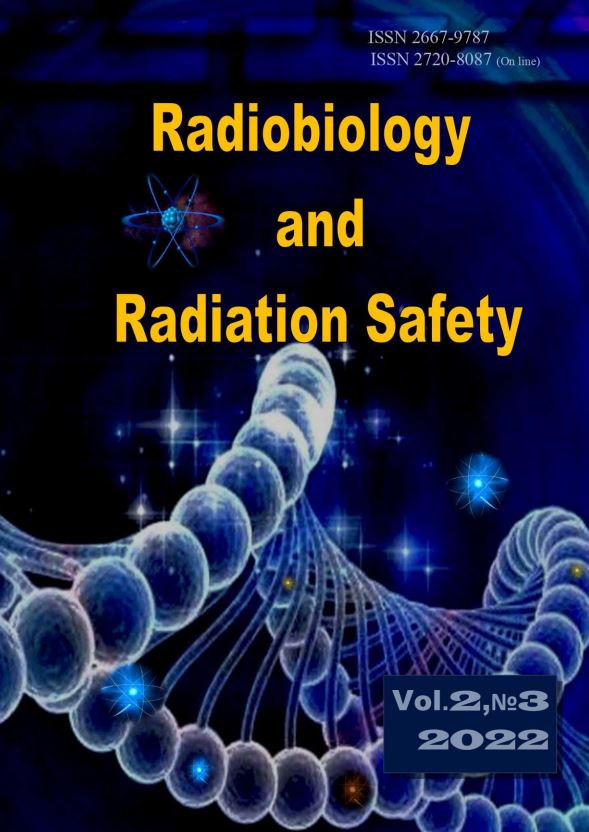Micronuclacted Erythrocytes - As A Potential New Biomarker Of Late Effects Of Radiation Impact
Keywords:
Micronuclear Normochromic Erythrocyte, Ionizing Radiation, New MarkerAbstract
The current task of modern biomedicine is to study the mechanisms of development of late effects of radiation-chemical impact, in order to develop simple and reliable criteria for predicting the severity of pathological processes and their consequences. The purpose of this paper was to determine the informativeness of current post-radiation changes in red blood system from the point of view of evaluating the severity of radiation pathology; In the groups of mice irradiated with sub- and semi-lethal doses, was studied the dependence of the probability of mice survival on the frequencies of micronuclear normochromic erythrocytes (MN-NCE) in the peripheral blood in the near and intermediate stages of the post-radiation period. The experiments were carried out on outbred mice (80 mice aged 8 week) and non-irradiated 10 mice. . Mice were randomly divided into groups irradiated at 3.5 Gy (group I, 30 mice), 5 Gy (group II, 30 mice), 6.5 Gy (group III, 20 mice), and sham-irradiated mice (group IV, 10 mice). Blood was collected from the tail vein of the mice. Blood smear was fixed into May-Grünwald' solution and dyed by Giemsa' s azur-eosin-methylene blue solution. Howell Jolly bodies in erythrocytes were counted for 1000 erythrocytes under a light microscope with inversion, lens magnification was 100x. In parallel with the blood examination, mice death caused by radiation were monitored daily and recorded to determine their survival. The data obtained by us shows that the increase in the frequencies of MN-NCE in the peripheral blood and the probability of mice death are time-correlated processes. The obtained results clearly indicate the high informative value of the frequencies of micronuclear erythrocytes in the peripheral blood in terms of assessing the depth of current pathological changes in erythropoiesis in the body's erythropoietic system (biological marker of the effect), however, when testing the genotoxic effects of various factors with the micronuclear test, the systemic factors of regulation of the frequencies of micronuclear erythrocytes should be taken into account.



